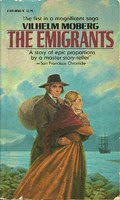From the book cover: The Hong Kong residence in which Sarah is staying is called the Pavilion of Apricots. It's a beautiful palace filled with an extraordinary art collection, but for Sarah, it has become a prison, the scene of events over which she has no control, which threaten to overwhelm her career, her great love -- and even her life.
I read this book while half asleep at night with my eyes half shut. For some non-academic reason I have made the commitment to track down and read every single book Anne Maybury has ever written completely overlooking the fact that most of her stories are lacking in plot and none of her books remain in print. It's not an easy task I have before me but I am determined to do it. So, with that in mind, here's my look at the The Jeweled Daughter:
Does the story include the necessary romantic-suspense elements?
a narrator who is ordinary and insignificant? No, Sarah is not a wallflower; in fact, she is by far the most likable lead character AM has ever created. Sarah Brent is a career woman, a jade specialist, and she travels the world for work attending auctions, appraising jewels, and studying art. She stays in Hong Kong because it benefits her career to do so, not because she is held there against her will. She has the means to leave if she chooses. She is independent and self directing.
an old house with a long history and secret passageways? Hmmm, well, in spite of the beautiful name, the Pavilion of Apricots never really materializes in my mind. The house is a compound of sorts in the middle of an old city enclosed by walls. There are interior gardens and doors to the street but the layout of the house was never clear to me. I don't think AM altered the "required" elements for a romantic-suspense novel; I think her interpretation fell short. The country house prototype works well in her other locations (Rome, Venice, and France), but not so well in Hong Kong.
a sophisticated female who is in competition for the husband who has superior beauty and status? Yes! Sarah's employer Theodora Paradine is wealthy and privileged. She gets what she wants and she only wants to acquire property, men, and more jewels. Once again, something was lacking in the description. Theodora's age was difficult to determine and, for that reason, I was never able to really imagine who she is supposed to be. Is Theodora an elderly woman with money or a middle-aged woman with means? Is she a fairly young woman with several marriages behind her? I don't know. Maybe I missed it.
a secretive husband whose trust is called into question? Yes. Sarah and her husband Marius are estranged. Marius is interested in Eastern healing practices and wants to incorporate them into Western medicine. Sarah is concerned that Marius might be willing to do anything ... including negotiate with Theodora ... to acquire the funds he needs to succeed.
an alternate male who provides support and friendship? Yes. Oliver Farache, Theodora's third husband, is visiting Hong Kong and takes Sarah out for an evening of drinks. Sarah thoroughly enjoys herself but there's no real hint of romance between them. Oliver is an obligatory character without much purpose to the story.
a murder or an attempted murder? Uh, well, the guy Sarah buys the jade from under unusual circumstances is found dead but who is he and what does his murder suggest? Unfortunately, the danger and mystery never develop into something worthwhile.
Is the conclusion of the novel satisfying?
Yes, but only because I was done with it. Overall, the story was un-engaging and fell flat. Did I miss something? Who can say but an immediate re-read is not in order.
From an historical perspective, though, the development of the female lead is interesting and quite possibly, this kind of evaluation is the real reason why I have signed on to this exercise of torture.
When I compare The Jeweled Daughter (1976) to I am Gabriella (1955), The Terracotta Palace (1970), and Ride a White Dolphin (1971), I notice radical changes how the main character is portrayed.
The earliest female lead, Karen (1955) is part of a detective duo. She works along side her husband and doesn't have a profession as far as I can remember although she may have had an inconsequential hobby.
Juliet (1970) is dependent upon her benefactors for her well being. She is employed but in between jobs and on a break. Whatever she does is merely a means to make money and her future is precarious.
Leonie (1971) is educated and was pursuing an unlikely career in something scientific but she gives it all up to be with her husband and resents the fact that she was not consulted about their relocation and that her job history will suffer.
Sarah (1976) is different. She is respected in her field. She meets and develops a relationship with a man who also has a career. Their marriage suffers when they try to balance out the demands of both professions but they come back together in the end and agree to make it work. This progressive relationship is a real testament to the social changes that were occurring during the 1970s and the way in which one small genre of fiction internalizes those changes fascinates me.
Saturday, March 7, 2015
Subscribe to:
Post Comments (Atom)




No comments:
Post a Comment